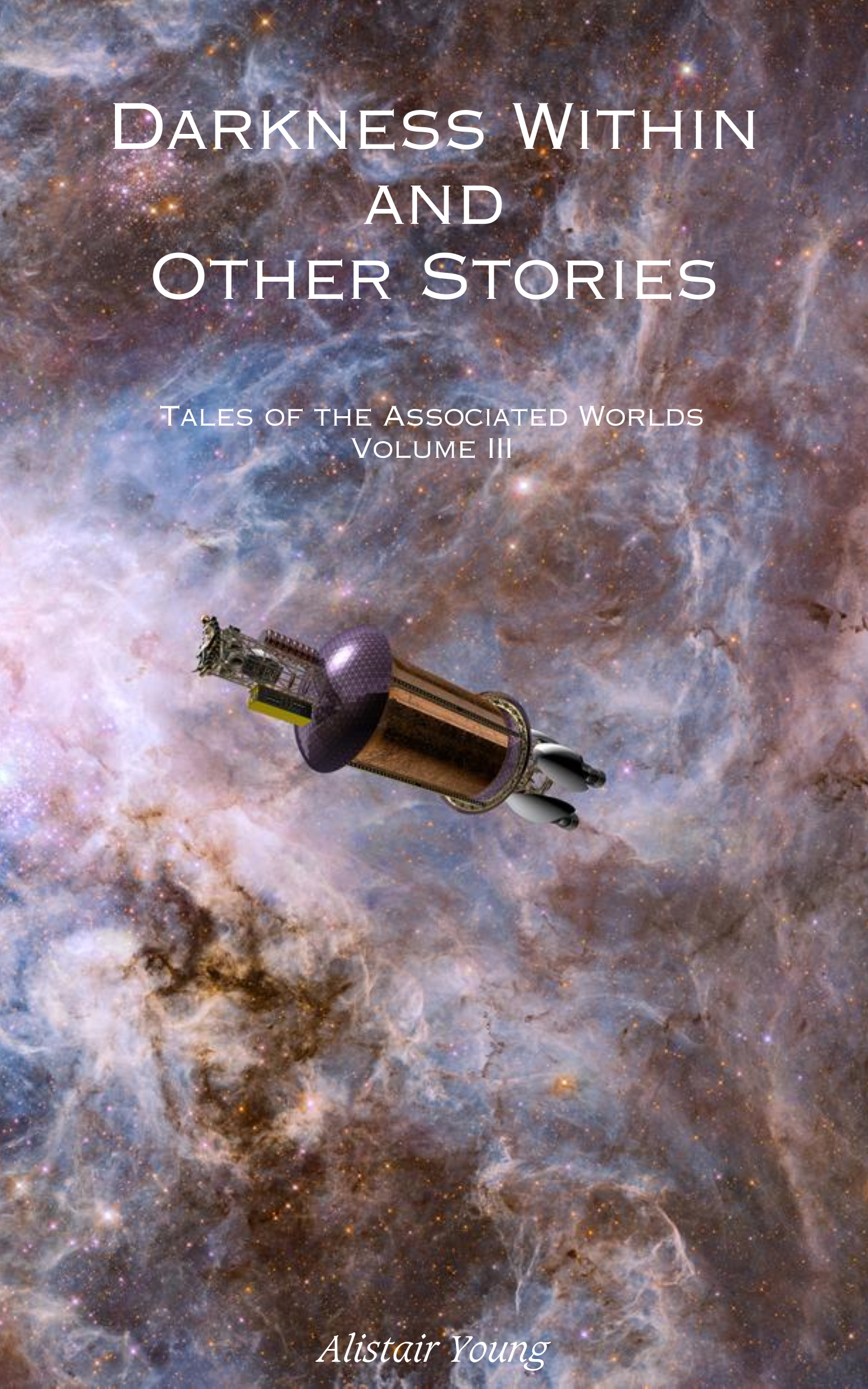“Your attention please, gentlesophs and adjuncts, and on behalf of Captain Corrével and the remainder of the crew, welcome aboard the IS Elegant Locus, operating Interstar flight 963 from Mer Dinévál Countermass Station, Seranth, to Star City Highport, Clajdíä. I am Galry Inurian-ith-Inuriannon, your purser for this flight.”
“At this time, all passengers and freight have been boarded, and the airlock doors have been closed. We have been given a departure window commencing in one hour, at which time the holds will be sealed for the duration of transit. If you have special cargo or steerage-class passengers you wish to check upon, please do so at this time.”
“When our departure is announced, please return to the ship’s lounge until we clear the station. Since we will be in microgravity immediately after departure and for the rest of the voyage, please ensure that all of your luggage and personal chattels are properly stowed and liquid containers sealed previous to this time. Emesis containers are located in the pocket of each lounge seat, and microgravity adaptation syndrome drugs are available on request from the lounge stewards or other crew members. For those passengers who are not spacer-certified, Interstar is pleased to offer a complimentary basic class in microgravity navigation and other tasks in the ship’s gymnasium immediately after departure. Our time of transit to Clajdíä will be approximately eight days.”
“At this time, the Shipboard Information Service has been enabled. Details of the costs for dedicated tight-beam or tangle transmissions are available on the ship’s intranet, as are charges for processor rental. Batched data transfer and access to the ship’s extensive library and cache are available at no charge.”
“Under the Imperial Navigation Act, we are required to familiarize you with certain emergency procedures. In a loss-of-pressure emergency in any compartment of the ship, this alarm will sound — and the ship’s lightning will switch to high-contrast blue. The spacetight doors will immediately seal off each compartment. If you are in a compartment designated as a pressure shelter at this time, identifiable by the green and blue bands painted at the top of the bulkheads, please remain where you are until otherwise instructed.”
“If you are in a compartment that is not a pressure shelter, or if you are in a pressure shelter and this alarm sounds — accompanied by strobing high-contrast blue lighting, indicating a local loss of pressure, you should immediately locate the nearest individual rescue ball. These are located behind the emergency panels in each compartment, marked in hazard yellow. Simply pull the panel from the wall, and remove the rescue ball. Unfold it, place it on the floor, sit on it, and pull the red handle at the sides of the ball up simultaneously and over your head until they meet, at which point the sides of the ball will catalytically seal together and the ball will inflate. In the event that the automatic sealer fails, remove any foreign objects from the area where the edges of the ball meet, and press the edges together manually until a proper seal is formed. There is no need to rush; explosive decompression is exceedingly rare, and carelessness in this task is a greater risk than delay.”
“Each rescue ball contains a self-repair pack, essential medical supplies, and an intercom system to allow communication with crew and with passengers in other balls. It also contains an automatically activated rescue transponder that will report your location and status to the crew. The rescue ball’s internal air supply will last for a minimum of one hour; if you will be required to remain for longer periods of time, the crew will connect your rescue ball to the ship’s backup oxygen supply.”
“In the event of a local loss of pressure, sealing capsules may be released into the compartment’s air to plug the leak. While the sealant gel is unpleasant to the touch should you come into contact with it, it is non-toxic and designed to bond only to hull metals.”
“Should a fire occur in any compartment, the following alarm will sound — along with red, flashing alert signs. You should leave the compartment immediately, following the bulkhead track lighting to the nearest spacetight door. If a fire is of magnitude sufficient to trigger the alarm, you should not attempt to fight the fire; the fire will be extinguished when the compartment is vented to space. Do not stop to collect your belongings or other items. While every attempt will be made to provide reasonable escape time, the spacetight doors will seal as rapidly as is necessary to secure the safety of the ship, and the compartment vented to space to extinguish the fire. If you are unable to escape the compartment before the spacetight doors seal, make use of a rescue ball in a location as distant from the fire as possible.”
“In the event of any other survivable emergency situation, please report to a pressure shelter compartment as soon as possible, and comply with all directions given by the ship’s crew. If you are trapped or otherwise unable to reach a pressure shelter compartment, please contact us using the emergency channel on any ship intercom.”
“If you have any questions about the flight at any time, please don’t hesitate to ask any of our cabin stewards. Thank you, and again, on behalf of Captain Corréval and the crew, please enjoy your voyage with Interstar.”
 Primarily set after the Core War, this book returns to the style of “Vignettes of the Star Empire”, with more nanofiction from the Associated Worlds, including some of the events following the war in “Aftershocks”, and the multi-part story “Darkness Within”.
Primarily set after the Core War, this book returns to the style of “Vignettes of the Star Empire”, with more nanofiction from the Associated Worlds, including some of the events following the war in “Aftershocks”, and the multi-part story “Darkness Within”. 